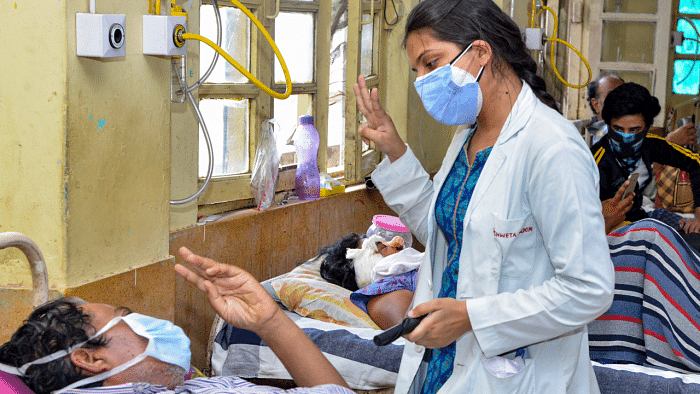
The number of nurses at primary and community health centres has increased by almost 37 per cent since 2014, but the number of doctors at PHCs – often the first point of medical contact for rural India - and specialists at CHCs rose marginally, according to the 2023 Economic Survey report tabled in the Parliament on Tuesday.
The number of MBBS and MD seats has witnessed a steady rise since 2014, generating more doctors as well as specialists.
The Economic Survey, quoting the Rural Health Statistics 2021-22 report, showed just about 3,200 doctors in the PHCs (4-6 beds) and 400 specialists like surgeons, paediatricians, obstetrician and gynecologists and physicians decided to serve in the CHCs (30 beds) in villages in the last seven years even though tens and thousands of medical seats have been added.
Also Read | 5G rollout can unleash new economic opportunities : Economic Survey
The number of MBBS seats rose from more than 54,000 in 2014-15 to over 96,000 in 2022-23 whereas the number of post-graduate medical education seats went up from 23,000 in 2014-15 to 64,000 in 2022-23, as per the information shared by the Union Health Ministry with the Parliament.
About a year back, the junior health minister Bharati Pravin Pawar informed the Rajya Sabha that there was 75 per cent rise in MBBS and 93 per cent increase in MD seats since 2014, but she didn’t offer any explanation on why even the freshly pass-out doctors skip the countryside.
On a positive note, the number of nurses working in 25,000 PHCs and 5,500 CHC, increased by 37 per cent - 64,000 in 2014-15 to 80,000 in 2022-23. Similarly, there is also a rise in the number of pharmacists and lab technicians. But the availability of doctors remains an area of concern.
While the Economic Survey did not offer any analysis on why doctors don’t prefer to go to the villages and what is the way out, experts observed that the government neither pumped enough resources into the CHCs and nor did it look for innovative approaches to lure and retain specialists in villages.
